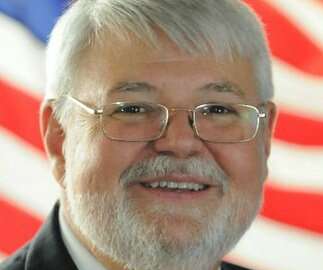
New office at Energy shifts spotlight to talent management
The Department of Energy is looking to deliver a jolt to its workforce development and recruitment processes, so it’s standing up a new Office of Talent...
The Department of Energy is looking to deliver a jolt to its workforce development and recruitment processes, so it’s standing up a new Office of Talent Management to do just that.
It started when DoE undertook a talent management study last year.
DoE wanted to look past the anecdotes — that government can’t recruit millennials, doesn’t pay enough and that managers only want to backfill positions — and get a real picture of how it was hiring and retaining employees. It wanted data to either confirm or correct the assertions that are commonly made.
“We wanted to know from a baseline what’s happening around DoE in recruitment and hiring. Are things as bad as it seems?” asked Jeffery Anoka, director of Corporate Recruitment and Outreach at DoE, during an Oct. 27 GovExec talent management webinar. “Is our DoE construct an impediment to a successful recruiting and learning environment?”
The idea was to find out how much money was being spent on training and recruitment programs, who was working on them dand how effective they were.
What the study found was more nuanced than the assertions it started with, but still wasn’t that great.
The study showed that recruitment at DoE lacked workforce planning. Some departments took it seriously, but others were reactionary. Most did not have strategies in place because they generally didn’t know what positions needed to be filled. There was also no coordination between the offices.
“One of the interesting things we found through our surveys and engagement was that there were several program offices that were engaged in recruitment efforts,” Anoka said. “They were going to the same schools, very good, reputable schools in the engineering space. But the issue was that one program office went on campuses between the September and early October timeframe. The other program office — and I can’t joke about this enough — the other program office actually went on campus on Dec. 23.”
Anoka said this was pretty typical, and that limited planning plus inefficient processes frequently led to duplications of effort. Offices weren’t planning ahead for organization or communicating with each other. Instead, they were reacting to needs as they came up throughout the budget year.
That’s why the first recommendation of the study was to identify corporate leadership plans and run them out of one organization. It found the department had a strong need for development of workforce plans, to include training needs assessments, outlook for positions to be filled and attrition measurement. DoE also needed to develop its recruiting strategy.
That’s where the new Office of Talent Management comes in.
“These are things that are being actively worked on and will be soon worked on under this new talent management organization. As we identify our next steps, this organization will have four major functions,” Anoka said.
The first is talent acquisition. The office is looking at strategic recruiting activities, engagement opportunities, and the use of hiring flexibilities in order to bring more talent into DoE.
“How do we engage talent at a very early age and build a pipeline, and how do we get the talent onboard, develop them, retain them, train them, and watch them retire out into their golden years?” Anoka asked.
He said the office will coordinate recruitment efforts, as well as make sure human resources departments have all the tools they need to hire more effectively, to include refresher courses on hiring authorities and ways to bring on talent more quickly and flexibly.
“We can no longer afford to just ‘post and pray,’” Anoka said. “We have to be proactive in engaging the talent pipelines. We’re not only competing against the wonderful federal government, we’re competing against private industry. In many cases, these organizations are on campus as early as middle school for many occupations.”
The second function of the new office is onboarding. Anoka said that the first year is crucial to an employee’s decision to remain at DoE or in any other job.
“My view, and the view of most people who sit in this chief recruiter’s seat is that recruitment starts from pipeline development all the way through at least 18 months of a new employee’s time with an organization,” he said. “Although they’re on board, we’re still recruiting them. An effective onboarding program that measures their happiness and satisfaction of both the manager as well as the employee through at least the first year is going to be pivotal.”
Workforce development is the third function, which will include big investments in leadership training and coordination between offices to reduce duplicate efforts.
“Traditional training and learning will still fall under this organization and provide solutions and strategic direction for the agency around its training and development needs,” Anoka said.
Finally, the office will be responsible for organizational effectiveness.
“What are we doing with these folks once we get them on board and we get them past year one,” Anoka asked. “How are we keeping them satisfied? Are we measuring whether they’re satisfied? Are we developing solutions and tools that can enable managers to be effective in leading their organizations?”
“Talent management only happens when everyone has the tools necessary to succeed,” he said.
Copyright © 2025 Federal News Network. All rights reserved. This website is not intended for users located within the European Economic Area.
Daisy Thornton is Federal News Network’s digital managing editor. In addition to her editing responsibilities, she covers federal management, workforce and technology issues. She is also the commentary editor; email her your letters to the editor and pitches for contributed bylines.
Follow @dthorntonWFED





